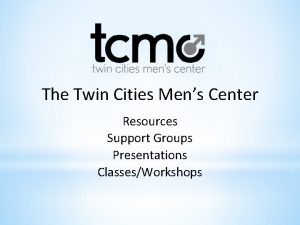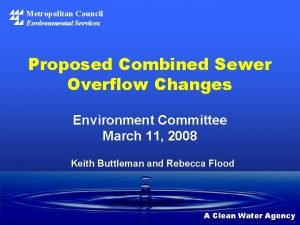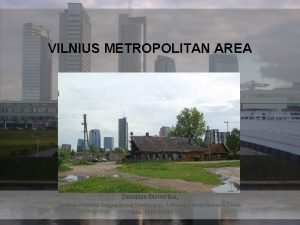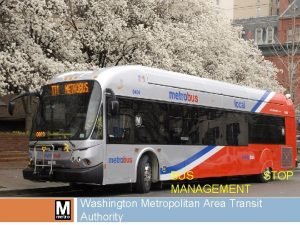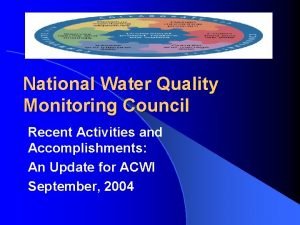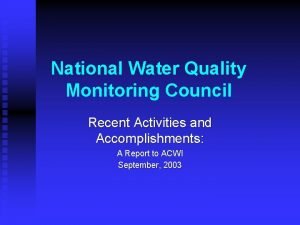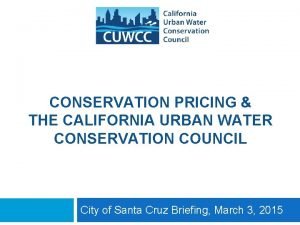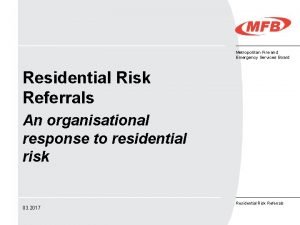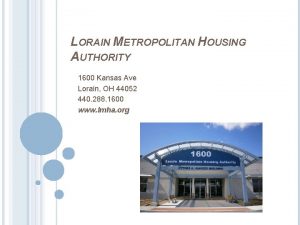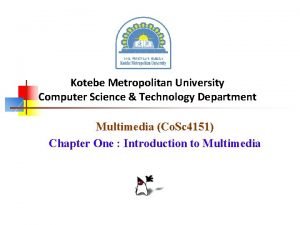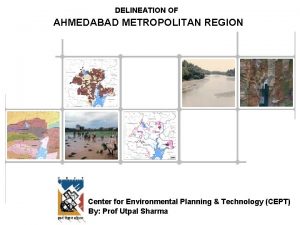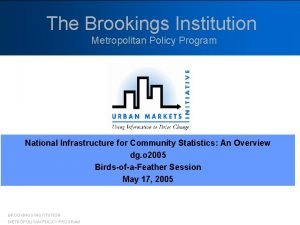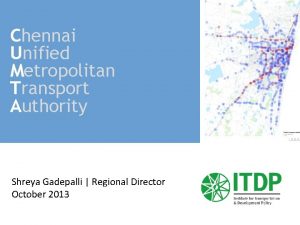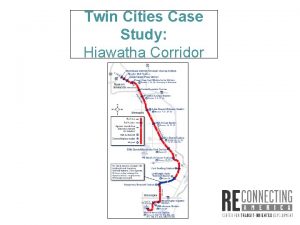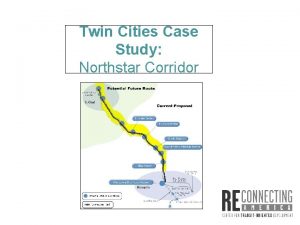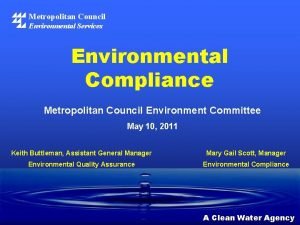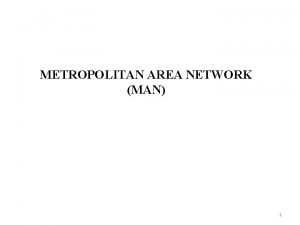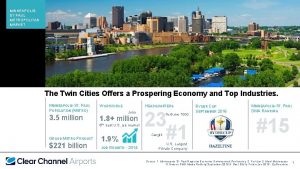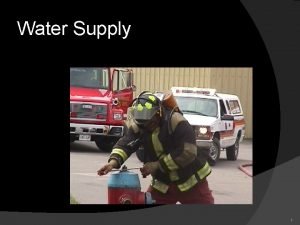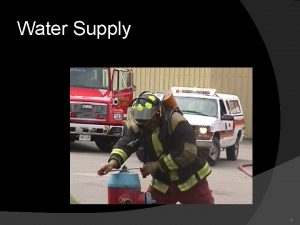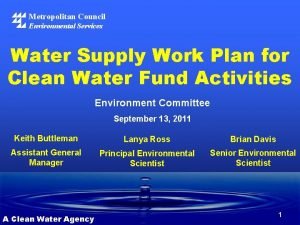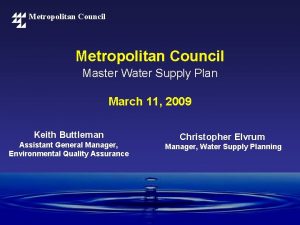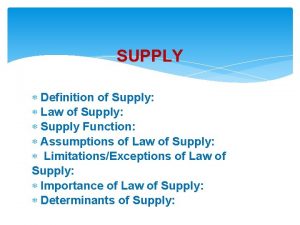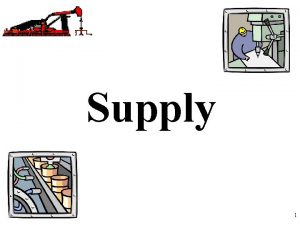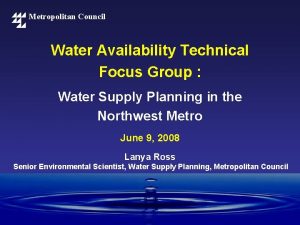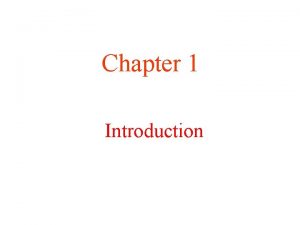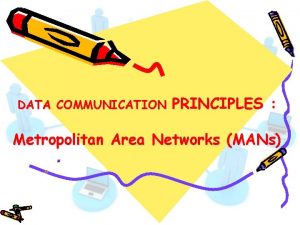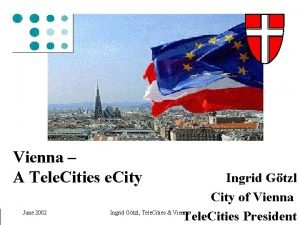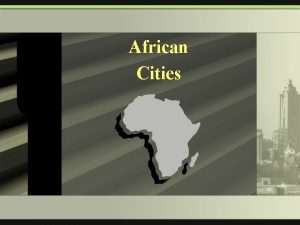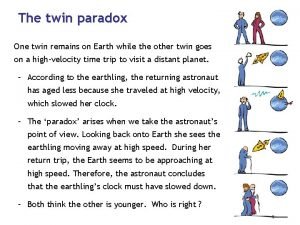Metropolitan Council Twin Cities Metropolitan Area Water Supply

























- Slides: 25

Metropolitan Council Twin Cities Metropolitan Area Water Supply: Regional Groundwater Flow Modeling March 11, 2008 Lanya Ross Senior Environmental Scientist

Outline n Model Purpose n Model Inputs n Model Calibration n Example of Model Use n Next Steps

Goal To ensure safe, secure, reliable, cost-effective and equitable water supplies for current and future generations.

Model Purpose How do we sustainably manage our water supplies? n What is a good estimate of the capacity of a wellfield? n What will drawdown be from a proposed well? n What will future regional groundwater levels be? n How will future pumping affect ecological features? n How might development patterns affect recharge?

Metro Model 2. 0 TAC 2006 – Preliminary Analysis 2007 – Model Development and Quarterly TAC Meetings 2008 – Beta Testing Calibrated Models and Scenario Running For more information: www. metrocouncil. org/environment/Water Supply/metrogroundwatermodel. htm

Model Layers: 1. Quaternary 2. St. Peter 3. Prairie du Chien 4. Jordan 5. St. Lawrence 6. Franconia 7. Ironton-Galesville 8. Eau Claire 9. Mt. Simon

Aquifer Property Zones: Quaternary

Boundaries: 1. No-Flow 2. Constant Head 3. River

Targets: 1. Head: 14, 536 2. Flux: 35

Targets in Layer 9: Mt. Simon

Model Head Calibration

Layer 1 Residual Mean: -0. 30 m

Example of Model Use What are the impacts of projected 2050 municipal demand? n Assume traditional sources used in the future n Assume communities with no municipal supply do not develop a municipal supply n Assume that future wells pump at the average rate reported for metro area wells in that aquifer

Results – Projected Demand


Next Steps n Regional scenarios — Climate Change — Land Use n Local questions — Impacts of Alternative Supplies n Continue to address uncertainty



Additional Figures


Aquifer Property Zones: Prairie du Chien

Layer 3 Residual Mean: -2. 07 m

Head Calibration: Prairie du Chien

Head Calibration: Quaternary

Head Calibration: Mt. Simon
 Twin-twin transfusion syndrome
Twin-twin transfusion syndrome Rumus twin twin
Rumus twin twin Twin cities men's center
Twin cities men's center Dcma twin cities
Dcma twin cities Water and water and water water
Water and water and water water Metropolitan council environmental services
Metropolitan council environmental services Vilnius metropolitan area
Vilnius metropolitan area Metropolitan area network
Metropolitan area network Metropolitan area
Metropolitan area Supply chain risk leadership council
Supply chain risk leadership council Chapter 5 section 1 supply and the law of supply
Chapter 5 section 1 supply and the law of supply Elastisidad ng supply
Elastisidad ng supply Matching supply with demand
Matching supply with demand National water quality monitoring conference
National water quality monitoring conference National water quality monitoring council
National water quality monitoring council California urban water conservation council
California urban water conservation council Metropolitan fire and emergency services board
Metropolitan fire and emergency services board Lorain county section 8
Lorain county section 8 Kotebe metropolitan university
Kotebe metropolitan university Ahmedabad metropolitan region
Ahmedabad metropolitan region Brookings metropolitan policy program
Brookings metropolitan policy program Art lovers can visit the - metropolitan museum of art.
Art lovers can visit the - metropolitan museum of art. Habib metro car finance
Habib metro car finance Smha housing
Smha housing European metropolitan authorities
European metropolitan authorities Unified metropolitan transport authority
Unified metropolitan transport authority


